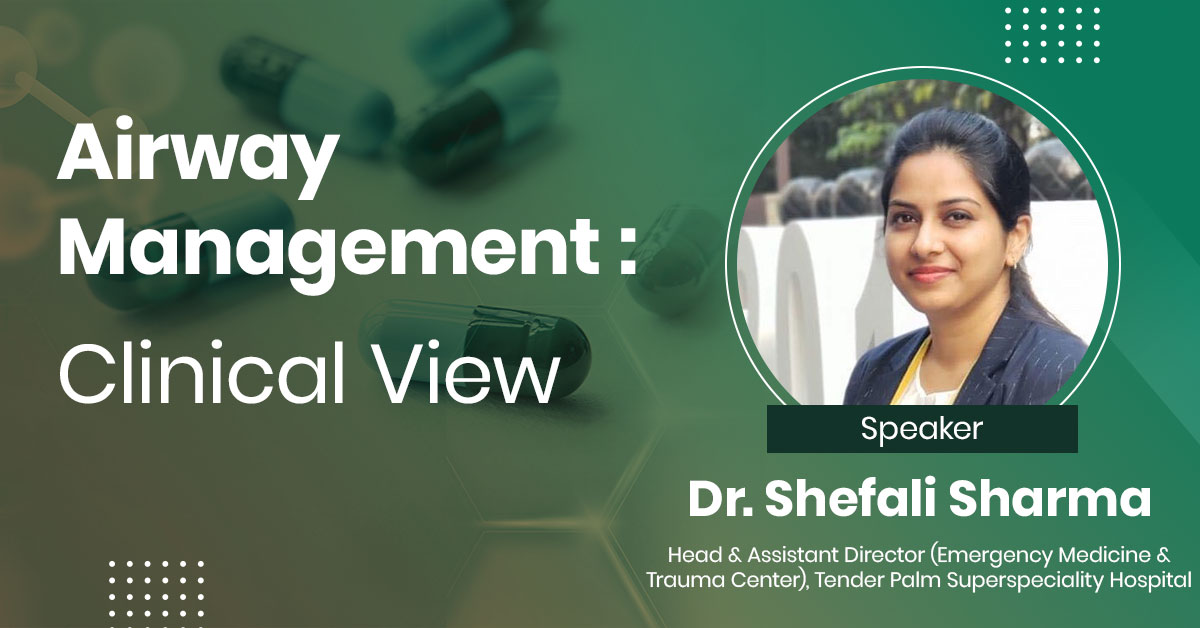- 119.6k views
Airway Management : Clinical View
The provider needs to be knowledgeable of the important anatomical, physiological, and pathological characteristics associated with the airway in order to manage the airway effectively. The many tools and techniques that have been created for this aim should also be known to them. It's also critical to understand the benefits, risks, and drawbacks of endotracheal intubation. Understanding how to evaluate the confirmation of appropriate endotracheal tube placement is crucial. Furthermore, it is crucial to understand the distinctions between the adult, pediatrics, and neonatal airways as well as difficult airways as these might have a big impact on safe and effective airway control.
About the Speaker

Dr. Shefali Sharma
Head & Assistant Director Department of Emergency Medicine & Trauma Center Tender Palm Superspeciality Hospital
Upcoming Case Discussions
Gynaecologist’s Guide to Ovarian Cancer
Join us for a special webinar on World Ovarian Cancer Day, titled "Gynaecologist’s Guide to Ovarian Cancer." This expert-led session will delve into the latest advancements in early diagnosis, risk stratification, and evidence-based management of ovarian cancer. Tailored for gynecologists and healthcare professionals, the session will also explore real-world case discussions and multidisciplinary treatment approaches. Let’s come together to raise awareness and empower clinicians in the fight against this silent but deadly disease
Massive Transfusion Protocol
Massive Transfusion Protocol (MTP) is a standardized medical procedure activated in cases of severe hemorrhage, typically involving the rapid administration of large volumes of blood products. The goal is to restore circulating volume, maintain hemostasis, and prevent the lethal triad of hypothermia, acidosis, and coagulopathy. MTP usually involves a balanced ratio of packed red blood cells, plasma, and platelets, often in a 1:1:1 ratio. Early activation and coordination among trauma teams, laboratory services, and blood banks are essential for its success.
Sleep Apnea and Daytime Fatigue
Sleep Disorder Breathing is a term for a group of conditions with abnormal breathing patterns during sleep. This affects everyday functioning and well being.There are few types of SDB which include upper airways resistance, hypopnea, apnea, catathrenia and heavy snoring. People suffering with SDB can have daytime symptoms that result in poor sleep also. There can also be sleepiness, depressed mood, irritability and cognitive dysfunction.






